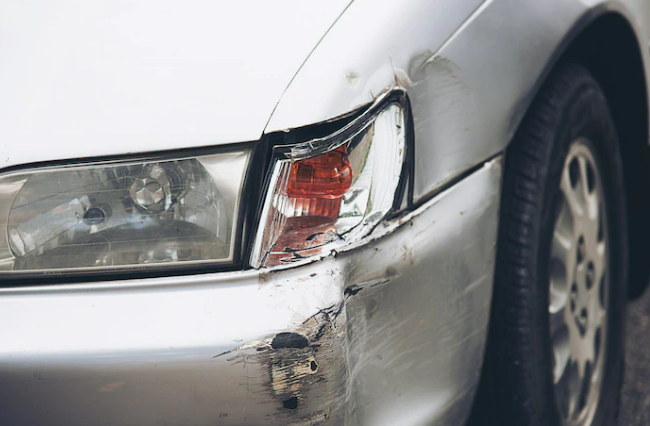As an Amazon Associate, I earn a small commission from qualifying purchases. Learn more about this.
Renting a car should be a seamless experience, but sometimes accidents happen, and understanding the potential charges is only just important.
Avis, like many other car rental companies, holds customers responsible for any damage sustained during the rental period.
But what do they define as damage? and what are the conditions as well as the processes for these things? This article will take a look at these things.
What Constitutes a Damage at Avis?

Let’s kick things off by laying the groundwork for understanding what actually qualifies as damage at Avis.
Now, it’s important to note that damage isn’t just limited to a massive dent from a fender bender or a shattered window from a stray piece of gravel.
At most car rental companies, damage can range from minor scratches and dings to significant, extensive damage. It’s all about the condition the vehicle is in when you return it compared to when you rented it.
Each car is thoroughly inspected before rental to document its existing condition, and a similar inspection is carried out when the car is returned.
If any new damage is found, Avis will assess the extent and severity of the damage to determine the appropriate repair cost. This includes both external and internal damages.
“Wait, what about fair wear and tear?” Good question! Fair wear and tear, or what’s considered reasonable use, is not something you’ll be charged for.
This includes minor issues like the normal wear of tires or slight fading of the paint, which naturally occur over time. However, anything beyond this, such as new scratches, dents, or internal damage, will incur a charge.
Let’s get Fair wear and tear guide in detail:
Fair Wear and Tear Guide at Avis
For any damage considered as fair wear and tear, Avis has no right to get you charged. On the other hand, this is the opposite of what happens with damages excluded from the fair wear and tear guide.
Dents:
- Included as Fair Wear and Tear:
- Dents under 25 mm in diameter (excluding certain areas), with unbroken paint surface.
- Excluded:
- Hail damage, dents on bonnets, roofs, and other specific areas, and any damage affecting the paintwork.
Stone Chips:
- Included as Fair Wear and Tear:
- Isolated stone chips on any panel up to 2 mm in diameter.
- Excluded:
- More than five stone chips in an isolated area.
Scratches:
- Included as Fair Wear and Tear:
- Light scratches not exceeding 25 mm in length and 1 mm in width, with no paint surface penetration.
- Excluded:
- Any scratch exposing metal, plastic, or undercoat.
Bumpers:
- Included as Fair Wear and Tear:
- Non-visible scratches/scrapes under the front bumper, light scuffing or isolated stone chips up to 2 mm.
- Excluded:
- Broken paint, multiple scratches, dents over 25 mm, and damage to textured bumpers.
Wheels, Wheel Trims, Tyres:
- Included as Fair Wear and Tear:
- Light scratches and scuffing up to 20 mm in length.
- Excluded:
- Damaged or mismatched wheel trims, hubcaps, and alloy rims, unroadworthy tyre conditions, and replacement tyres differing from original ones.
Windscreen, Windows, Lamps, and External Mirrors:
- Excluded:
- Any damage, including scratches, chipping, cracks, and holes.
Upholstery and Interior:
- Included as Fair Wear and Tear:
- Light marks removable by vacuum or general cleaning.
- Excluded:
- Permanent damage, tears, holes, burns, excessive soil or sand, evidence of smoking, or unremovable stains or marks.
Keys, Accessories, and Equipment:
- Included as Fair Wear and Tear:
- Minor cosmetic damage not affecting functionality.
- Excluded:
- Loss or damage to keys or remotes, damage from incorrect fitting of accessories, and damage to or removal of items supplied with the vehicle.
How are Avis damage charges calculated?
When damage that is not considered as Fair Wear and Tear is identified upon the return of a rented vehicle, Avis undertakes a comprehensive assessment to determine the cost of repairs.
The charges are calculated based on the extent and nature of the damage, and Avis employs a standardized pricing for various types of damages. This standardization ensures that customers are charged fairly based on the actual damage, without any arbitrary fees.

The repair cost is not the only factor in the total damage charge.
Avis also considers the administrative costs involved in handling the damage claim, which includes the expenses related to processing the claim and getting the vehicle repaired.
Additionally, Avis may also charge for ‘loss of use’ – a fee for the potential revenue lost while the vehicle is out of service for repairs.
So basically, there are 3 charges for damage at Avis:
- The cost of fixing the damage
- Administrative fee (service fee)
- Loss of use
It’s important to note that these charges all varies depending on the extent of the damage, and how long it takes to fix the damage.
Here’s a pro tip: Before returning the rented vehicle, take some time to inspect the car for any new damage and compare it with the condition report provided at the start of the rental.
If you find any damage, report it proactively to Avis. It’s always better to be upfront than to be caught off guard with charges later on.
It’s also worth noting that purchasing additional coverage or protection packages at the time of rental can help mitigate these damage charges.
These packages may cover the costs of repairs, administrative fees, and loss of use, offering peace of mind and financial protection in case of accidental damage.
What If You Disagree with the Charges?
First and foremost, always keep your rental agreement and any inspection documentation you received at the beginning and end of your rental. These papers will be your primary reference point if there’s a dispute.

They contain crucial evidence, such as the initial condition of the vehicle, and can be invaluable in making your case.
If you’re handed a bill you weren’t expecting, don’t hesitate to reach out to Avis customer service. Engage in a conversation and explain your concerns clearly.
Often, misunderstandings can arise from lack of communication or simple oversight, and these can often be cleared up with a direct conversation.
If the initial discussion doesn’t resolve the matter, consider escalating the issue.
Avis, like many reputable companies, has a structured process for handling customer complaints and disputes. You might be asked to provide evidence like photographs or testimonies, so be prepared.
And here’s a bit of parting wisdom: always consider getting third-party documentation. If you feel something’s not right, getting an independent assessment or opinion on the damage from a trusted mechanic or auto body shop can be a strong supporting argument in your favor.
Conclusion
Having a smooth car rental experience is all about knowing the policies in place and knowing how to get over them.
At Avis, being in the know about what counts as damage, how charges are calculated, and how to dispute a charge ensures you are always in the driver’s seat, metaphorically speaking







